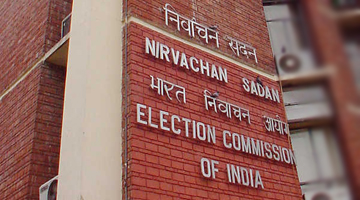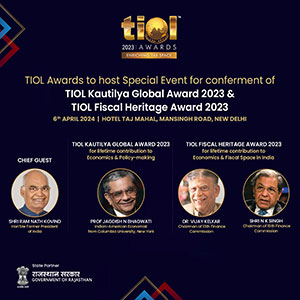Indirect Tax - What should one expect from Budget - 2016?
FEBRUARY 05, 2016
By Sumit Dutt Majumder
THIS year Mr Arun Jaitley, the Union Finance Minister, will get the best opportunity to present a bold budget responding exclusively to the call of the economy. It would be a mid-term budget, the election year 2019 being three years away, therefore, no pressure of pre-election sops. The National Democratic Alliance (NDA) Government can, and I am sure, will use the Budget 2016-17 as a major instrument for steering the economy to the high growth path even as it keeps an alert eye on the fiscal discipline.
The major challenge before the Union Finance Minister would be to reach the target of maintaining the fiscal deficit of 3.9 percent of the Gross Domestic Product (GDP), while simultaneously increasing public investment to maintain steady growth. One view is that for maintaining growth, there is no harm in having small break in the fiscal consolidation by way of public investment through planned capital expenditure, particularly in the infrastructure like road, highways and in power sector. Expenditure in these sectors would boost demand of goods like cement, steel and thus increase the manufacturing activity resulting in growth. Even with increased public expenditure, the target of the fiscal consolidation can be reached or nearly reached if the current revenue buoyancy in Indirect Taxes is further enhanced through strategic increase in rates of tax and better tax compliance. There does not seem to be any more scope to increase the Direct Taxes. That makes the strategic handling of Indirect Taxes more critical.
Another way of continuing with the fiscal consolidation for the government would be to find 'expenditure saving' and minimize additional expenditure demands. Yet another way would be to undertake bold subsidy reforms by way of minimizing and streamlining the Food and Fertilizer subsidies. Indeed, 2016 is the year when the Finance Minister can take unpopular steps as the economy demands. Reduction in the quantum of subsidy would be one. The Finance Minister may also be tempted to postpone the implementation of the recommendations of the Seventh Central Pay Commission by one year. This will give the government a cushion of Rs one lakh Crore for this Budget year. With this expenditure savings for one year - a critical and crucial year, the Government can afford to continue its public expenditure that would boost growth.
With this background, let us have a look at the Budget Expectations on the Indirect Tax front. First the Central Excise and Service Tax. The Goods and Services Tax (GST) Constitution Amendment Bill having missed the bus in the winter session of 2015, it is now certain that GST cannot be implemented from April 2016. Therefore, the Budget 2016-17 will have to have taxation proposals on Central Excise and Service Tax, the two central taxes that were to be subsumed in GST. Said that, it is also true that a GST is unputdownable and its introduction is just a matter of time. Therefore, the Budget, 2016-17 would provide an opportunity to prepare taxmen and tax payers to be ready for GST by aligning the tax structure of Central Excise and Service Tax, to start with. Given the need for a smooth transition to the GST regime, one can expect the following from the budget proposals of 2016-17.
The Expert Panel led by Mr Arvind Subramanian, the Chief Economic Advisor, has suggested four GST rates - standard rates of 17% to 18% for most of the goods, a merit rate of 12% for goods of consumption by common man, a demerit rate of 40% for Tobacco & Cigarette, Luxury cars and some Luxury Items and a special rate of 2% for precious metals. With these recommendations in mind, the Budget may provide for four rates of duty - of course, not with the rates recommended for GST.
At present the Central Excise exemptions are more than 300 in number, whereas, the State VAT has only around 100 exemptions. Since in the GST regime there will be the same set of exemptions for Central GST and State GST, the Budget 2016 may propose for a drastic reduction in the number of Central Excise exemptions. In choosing the exemptions that would continue the respective need for retaining those relating to Power and Infrastructure sectors would be kept in mind.
In the GST regime, the tax rate will be the same for goods and services. Given that the standard rate of goods are expected to be 18% minimum, the Service Tax rate may be increased to 16% incrementally in the Budget, 2016-17.
The threshold limit would remain the same for both Central and State GST in the GST regime. Currently, the threshold for Central Excise, Service Tax and State VAT are Rs 1.50 Crores, Rs.10 Lakhs and Rs.3 to 5 Lakhs respectively. The Centre and the States are negotiating for a threshold between Rs. 10 Lakhs and Rs. 25 Lakhs. Meanwhile, the CEA led panel has recommended for higher threshold of Rs.40 Lakhs. The Budget 2016 will provide an opportunity to bring down the threshold for Central Excise duty to Rs. 75 Lakhs and raise that for Service Tax to Rs.20 Lakhs.
Now the duty rates on goods that are not related to GST.
Considering that there is a public outcry against pollution in metros and big cities and the Judiciary also intervening by way of banning the heavy duty diesel vehicles, the Budget may propose further increase in the Excise duty on Diesel SUVs and other Diesel vehicles and reduction in duty on small vehicles that run on CNG or Petrol.
The continuous fall in oil prices in the international market may not continue, given the volatile international situation particularly the Middle East. The Finance Minister is expected to use the low oil price to tighten up subsidies and cut the fiscal deficit by increasing excise duty rate of oil and oil products.
As a measure of revenue mobilization to offset the increased public expenditure, the Finance Minister may also take a cue from the CEA panel's report and identify a few luxury items and increase Central Excise duty on them, as a prelude to GST.
As for the Customs duty, the scope for mobilization of revenue would be less. India has signed a number of Free Trade Agreements committing herself to either full exemption or preferential rates of Customs Duty. Then, there are certain items with WTO Bound rates, beyond which Customs Duty cannot be enhanced. Therefore, notwithstanding the demand for increased Custom duty on imported goods as to give a fillip to the 'Make in India' programme, the scope for doing that is limited. Nevertheless the Finance Minister is expected to increase Customs duty on goods on which there is no such aforesaid limitation. The finished consumer products - particularly the luxury once, may be targeted in this regard.
On the exports front, there has been the beginning of a crisis in the 'Emerging Markets' due to prevailing low oil prices - thus resulting in reduced demands in those market for Indian Exporters in making their goods and services competitive. It is expected that the Finance Minister would extend some major tax benefit to the exporters.
So, we may tighten our belt, and pull over socks up to be prepared for an increase in Indirect Taxes in certain identified items which are not generally consumed by the common man. We can also expect some expenditure savings and streamlining and minimizing of the Food and Fertilizer Subsidies. With this savings and garnering of extra revenue, the Finance Minister can continue to increase the public expenditure moderately in identified sectors. All the steps would help him maintain the fiscal deficit target of 3.9% GDP while at the same time delivering on growth. A challenging job, no doubt.
[The author is Former Chairman, Central Board of Excise & Customs and Consulting Editor, TIOL]
















